Schipkov: Dutch A99
1.d4 f5 2.c4
Nf6 3.Nf3 e6 4.g3
Be7 5.Bg2 0-0 6.0-0 d6 7.Nc3
Qe8 8.b3
|
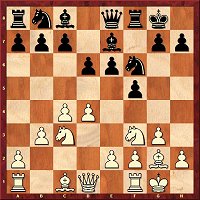
|
|
White’s 8.b3 prepares the development of the bishop to b2 or a3,
but he has not given up his plan of e2-e4, though this time
there will be the preparatory move
Qc2. There are various good moves which allow Black to meet this: 8...Qh5, but also 8...a5 and even 8...c6.
|
Prié: Scandinavian B01
1.e4 d5 2.exd5
Qxd5 3.Nc3
Qa5 4.d4
Nf6 5.Nf3
Bf5 6.Bc4 c6 7.Bd2
Bb4
|
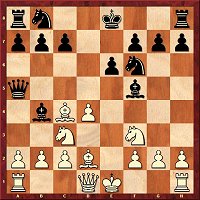
|
|
Developing the bishop to b4 is quite a new trend in the
Scandinavian Main Variation, but Black can get over the loss of the
bishop pair which is bound up with it. He frequently develops his
knight to c6 and works up pressure against the d4-pawn.
|
Stohl: Pirc Defence B09
1.e4 d6 2.d4 Nf6 3.Nc3 g6 4.f4 Bg7 5.Nf3 0-0 6.e5
|
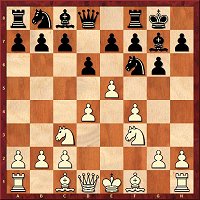
|
|
After the attacking 6.e5 Black has a decision to take: 6...dxe5 with the possible ending after 7.dxe5
Qxd1+ 8.Kxd1 or 6...Nfd7, after which Black’s kingside remains rather exposed and he would have to know what is going to happen after 7.h4.
|
Postny: Caro-Kann B13
1.e4 c6 2.d4 d5 3.exd5 cxd5 4.c4
Nf6 5.Nc3
Nc6 6.Bg5 dxc4 7.Bxc4
|
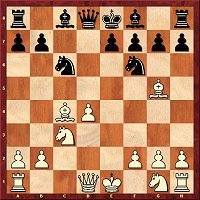
|
|
Doubtless 6.Bg5
is a good move if Black does not take on c4. But if he does, the
question is how to proceed from the position in the diagram with
the pawn hanging on d4. In his article Evgeny Postny shows that
both 7...Qxd4 and 7...h6 are very playable.
|
Krasenkow: Caro-Kann / Pirc Defence B15
1.e4 g6 2.d4
Bg7 3.Nc3 c6 4.f4 d5 5.e5
Qb6
|
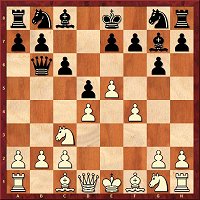
|
|
Michal Krasenkow has good knowledge and practical experience of
this setup for Black, which allows the latter to play
aggressively for a win. There is no clear way to an opening
advantage for White in sight. |
Grivas: Sicilian B33
1.e4 c5 2.Nf3 Nc6 3.d4 cxd4 4.Nxd4 Qb6 5.Nb3 Nf6 6.Nc3 e6 7.a3
|
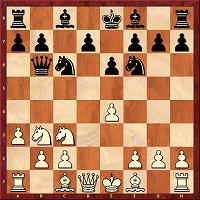
|
|
With the move of his rook pawn, White not only prevents ...Bb4
and ...Nb4, but prepares for an immediate 8.Bf4 (7.Bf4?! Bb4!).
The recommendation of Efstratios Grivas is therefore 7...Qc7!, after which Black achieves satisfactory play in all lines.
|
Moskalenko: French C02
1.e4 e6 2.d4 d5 3.e5 c5 4.c3
|
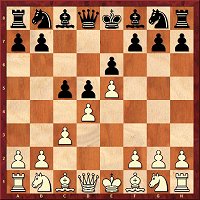
|
|
Alexander Grischuk’s great successes in the Advance Variation
are, according to Viktor Moskalenko, above all based on the fact
that his opponents (Ivanchuk and Morozevich!) developed the c8
bishop far too soon with 4...Bd7 and 4...Nc6 5.Nf3 Bd7. In his article the author suggests 5...Nge7.
|
Kritz: French C10
1.e4 e6 2.d4 d5 3.Nc3 (oder 3.Nd2)
3...dxe4 4.Nxe4
Bd7
|

|
|
Black brings his bishop to c6 and then frequently exchanges it
for a knight on f3. The setup is safe, because Black has no
weaknesses and can develop easily. Leonid Kritz shows that White
can get an advantage, but that Black nevertheless has good chances
of a draw. |
Marin: Three Knights Game C46
1.e4 e5 2.Nf3
Nc6 3.Nc3 g6 4.d4 exd4 5.Nxd4
Bg7 6.Be3
Nf6
|
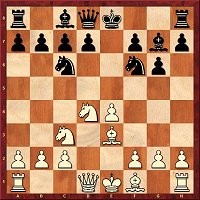
|
|
With this setup, Black is intending above all to avoid the arid
positions of the Four Knights Game. If White continues
unenterprisingly from the position in the diagram, Black can count
on a good game; therefore aggressive play is called for. |
Ftacnik: Semi-Slav D31
1.d4 d5 2.c4 e6 3.Nc3 c6 4.e4 dxe4 5.Nxe4
Bb4+ 6.Bd2
Qxd4 7.Bxb4
Qxe4+ 8.Be2
Na6 9.Ba5
|
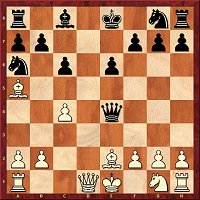
|
|
This dangerous gambit can be described briefly: White has no
opening advantage but scores very well in practice. For Black, only
one conclusion is possible: he needs to know these variations well
if he chooses to go into them. |
Breutigam: Tarrasch Defence D34
1.d4 d5 2.c4 e6 3.Nf3 c5 4.cxd5 exd5 5.g3
Nf6 6.Bg2
Nc6 7.0-0
Be7
|
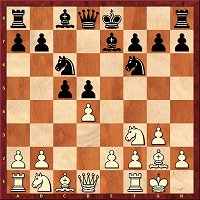
|
|
In his second contribution on the Tarrasch Defence, Martin
Breutigam shows that in the Rubinstein System there is no need for
Black to fear the side variations (8.Nc3 0-0 9.b3 and 9.dxc5 or 9.Be3, or even 8.Be3).
|
Kuzmin: Catalan E04
1.d4 d5 2.c4 e6 3.Nf3
Nf6 4.g3 dxc4 5.Bg2
Bb4+ 6.Bd2 c5
|
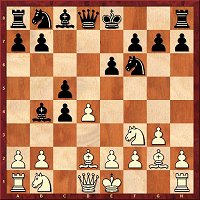
|
|
The idea of using ...c5 to protect the
Bb4
comes from Alvins Vitolins and was first employed in the
Bogo-Indian. Its transfer to the Catalan is still quite new, but so
far has worked well. In principle White should carry on and
capture on b4. |